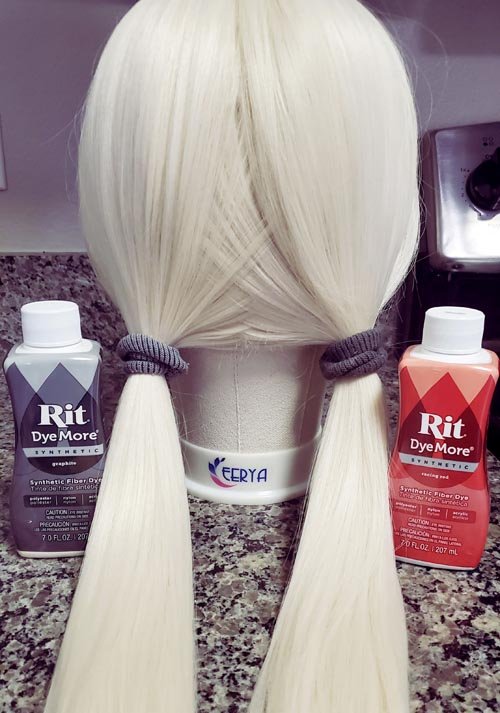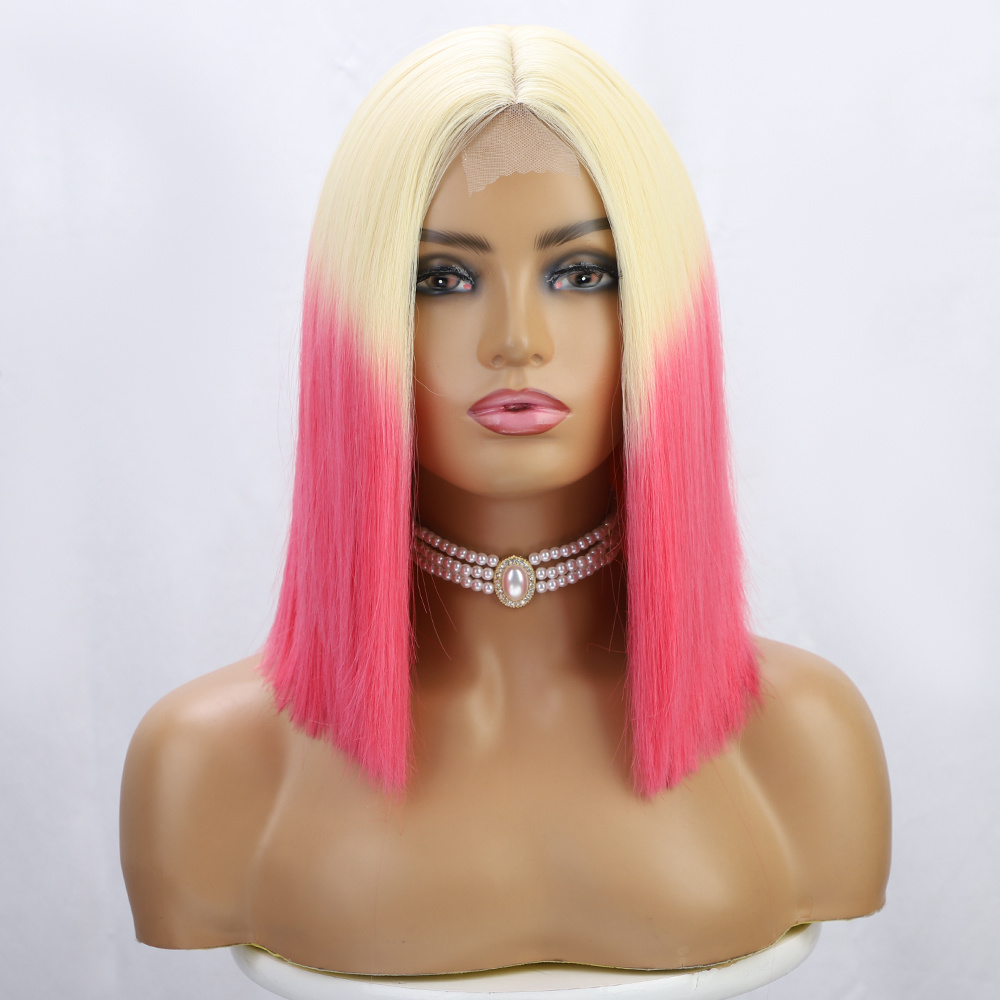Introduction
Coloring synthetic hair can be a fun and creative way to change up your look. However, it’s important to note that synthetic hair is not as versatile as human hair when it comes to coloring. Synthetic fibers are often made of materials like polyester or acrylic, which do not react well to traditional hair dyes or bleaches. That being said, there are alternative methods to color synthetic hair that can yield great results. Here’s a step-by-step guide on how to color synthetic hair:

Choose the Right Coloring Method:
There are two main methods for coloring synthetic hair: fabric dye and spray-on hair color. Fabric dye, such as iDye Poly or Rit DyeMore, is specifically designed for synthetic fibers and provides long-lasting and vibrant colors. Spray-on hair color, like temporary hair sprays or chalks, offers a more temporary and easily removable option.
Prepare the Synthetic Hair:
Before coloring, make sure the synthetic hair is clean and free from any styling products. Gently comb through the hair to remove any tangles or knots. If the hairpiece or wig has been previously styled, consider resetting it to its original style after coloring.
Protect the Surrounding Area:
To prevent staining, cover your workspace with plastic or old newspapers. Wear gloves to protect your hands from the dye or color spray.
Test the Color:
It’s always a good idea to perform a color test on a small section of the synthetic hair before proceeding with the entire piece. This allows you to see the result and make any necessary adjustments before committing to the full coloring process.
For Fabric Dye:
Follow the instructions provided by the fabric dye manufacturer. Generally, the process involves dissolving the dye in hot water, submerging the synthetic hair in the dye mixture, and agitating it gently to ensure even color distribution. Let the hair sit in the dye for the recommended time, then rinse it thoroughly with cool water until the water runs clear. Allow the hair to air dry.
For Spray-on Hair Color:
Shake the spray-on hair color can well before use. Hold the can about 12 inches away from the synthetic hair and apply the color in even, sweeping motions. Start from the roots and work your way down to the ends. For more intense color, apply multiple layers, allowing each layer to dry before adding the next. Once you’ve achieved the desired color, let the hair dry completely.
Set the Color (Optional):
Some fabric dyes require heat setting to ensure colorfastness. Check the instructions provided with the dye to see if heat setting is required. This typically involves using a blow dryer or flat iron on low heat to gently heat the synthetic hair after coloring. Be cautious not to use excessive heat, as it can damage the synthetic fibers.
Style and Maintain:
After coloring and drying, style the synthetic hair as desired. Use heat-free styling methods, such as braiding or twisting, to avoid damage from hot tools. Regularly care for your colored synthetic hair by gently detangling it, avoiding excessive brushing or combing, and using products specifically formulated for synthetic hair.
Color Removal:
If you want to remove the color from synthetic hair, you can try soaking it in a mixture of warm water and mild shampoo or dish soap. Gently massage the hair to help release the color. Rinse thoroughly and repeat as needed until the color fades. Keep in mind that some colors may be more difficult to remove completely.

Choosing the Right Color:
When selecting a color for your synthetic hair, consider whether you want a subtle change or a dramatic transformation. Keep in mind that the original color of the synthetic hair will interact with the dye or color spray, resulting in a unique shade. Consider the undertones of the original hair color and how they might influence the final result.
Color Blending and Ombre Effects:
If you want to achieve a blended or ombre effect, you can use multiple colors or shades of dye to create a gradual transition from one color to another. This technique can add depth and dimension to the synthetic hair, giving it a more natural and visually appealing appearance.
Customizing the Color:
You can mix different shades of fabric dye to create a custom color that matches your desired look. This allows for greater flexibility in achieving a personalized color that complements your skin tone and personal style.
Avoiding Heat Exposure:
Synthetic hair is sensitive to heat, and exposure to high temperatures can cause the fibers to melt or become damaged. When coloring synthetic hair, avoid using hot water or applying direct heat from styling tools during the process. Opt for cool or lukewarm water and air drying to maintain the integrity of the synthetic fibers.
Avoiding Permanent Changes:
Unlike human hair, synthetic hair does not allow for permanent color changes. The color applied to synthetic hair using fabric dye or color sprays is considered semi-permanent and may gradually fade over time with regular wear and washing. Be prepared to touch up the color periodically to maintain its vibrancy.

Considerations for Wigs and Hairpieces:
If you are coloring a wig or hairpiece, consider the construction of the item. Some wigs have lace or delicate materials at the base, which should be protected from the dye or color spray. Additionally, take extra care when handling the wig to prevent tangling or damage during the coloring process.
Testing Colorfastness:
After coloring synthetic hair, it’s important to test the colorfastness before wearing the hairpiece or wig against light-colored fabrics or clothing. Dampen a white cloth or paper towel with water and gently rub it against a small section of the colored hair. If the color transfers onto the cloth, continue rinsing the hair until the water runs clear.
Exploring Temporary Color Options:
If you prefer a temporary color change, consider using washable hair color sprays or chalks designed for use on synthetic hair. These temporary options allow you to experiment with different colors without committing to a long-term change.
Seeking Professional Assistance:
If you are uncertain about coloring synthetic hair on your own, consider consulting a professional hairstylist who specializes in working with synthetic hair. They can offer guidance and expertise to help you achieve the desired color result while protecting the integrity of the synthetic fibers.

Conclusion
It’s essential to note that the results of coloring synthetic hair may vary based on the quality and composition of the fibers. Additionally, synthetic hair cannot be lightened with traditional bleach or hair dye meant for human hair. Always follow the instructions provided by the dye or color spray manufacturer and perform a patch test before applying the color to the entire piece. With proper care, synthetic hair can maintain its color vibrancy for an extended period, allowing you to enjoy your newly colored look.

